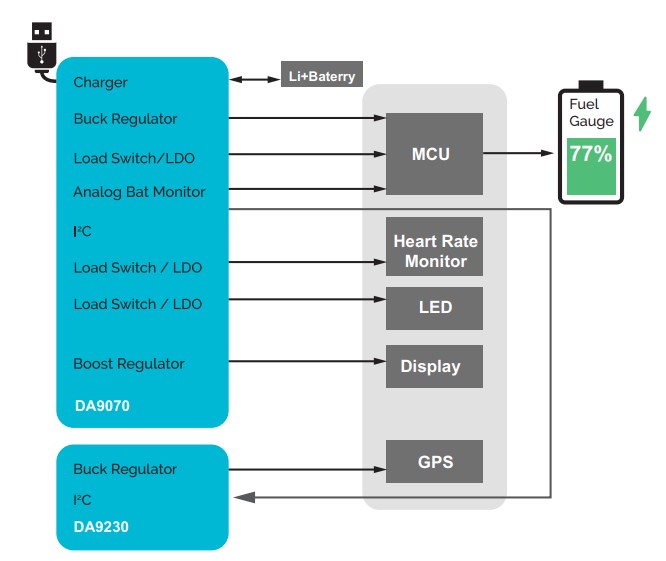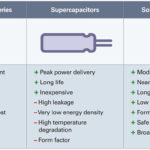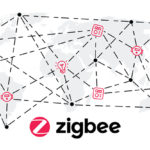Power system considerations are an important aspect of all system designs. In the case of wireless Internet of Things (IoT) nodes and wearables, power system design is complex, with the need to balance numerous performance tradeoffs. It is critical to arrive at a successful design that maximizes both battery life and overall functionality. Fortunately, there are various components available when designing power systems for wireless IoT nodes and wearables, including low drop out regulators (LDOs), various types of switching regulators, and power management ICs.
The challenge is maintaining power conversion efficiency in systems where the dynamic power range can be 10,000:1, and where the duty cycle for the high power activities of data transmission can be as low as 0.001%. Rapid dynamic response is necessary; it needs to be low noise, so it does not interfere with sensitive sensors or the RF elements. It must maintain high efficiency when operating at super low power levels for over 99% of the time.

Low quiescent current LDOs
The low power levels found in wireless IoT nodes lend themselves to simple and inexpensive LDOs for voltage regulation. In addition to providing voltage regulation, LDOs are used to isolate a sensitive load from a noisy power environment. Key LDO parameters include:
- Dropout voltage is the difference between the output voltage and the input voltage at which the LDO stops regulating the output with further reductions in input voltage.
- Power supply rejection ratio (PSRR) describes the capability of an LDO to suppress any power supply variations to its output, usually expressed in decibels.
- Transient response is important since an LDO cannot respond instantaneously to a transient load change. During the response time, the output capacitor supplies the load transient current and must be sized to support the largest expected transient load event, such as during wake up.
- Quiescent current (IQ) is a particularly important parameter in wireless IoT nodes and wearables since these applications spend most of the time in a low power mode. Lower IQs can be important factors in extending battery life.
The TPS7A02 from Texas Instruments, with an ultra-low IQ of 25nA, is designed specifically for applications where very-low quiescent current is a critical parameter. This device maintains low IQ consumption even in dropout mode to further increase the battery life. When in shutdown or disabled mode, the device consumes ultra-low, 3nA IQ that helps increase the battery’s shelf life. The TPS7A02 can deliver up to 200mA and has an output range of 0.8V to 5.0V available in 50-mV steps to support the lower core voltages of modern microcontrollers (MCUs).
ON Semiconductor offers the NCP171, a dual-mode LDO offering up to 80mA in Active Mode and as low as 50nA of IQ in Low Power Mode. The mode is selectable with the ECO pin allowing for dynamic switching between Active and Low Power Modes, designed for long life battery-powered wireless applications. The NCP171 has an operating input voltage range of 1.7V to 5.5V and an output voltage range of 0.6V to 3.3V (in 50 mV steps). The output voltage in Low Power mode can be lowered by an internally factory programmed value ranging 50mV, 100mV, 150mV, or 200mV with respect to the nominal output voltage in Active Mode. This feature further lowers the application consumption in sleep mode. The NCP171 is in the SLIQ (Super Low IQ) LDO family with an Ultra-Low Quiescent current of 50nA and is available in a small XDFN4 1.2 x 1.2 package.
Switching regulators
While LDOs are a good choice for low-powered devices or applications where the difference between the input voltage and output voltage is small, switching regulators can handle higher load currents and wider input voltage dynamic ranges. Suppliers of switching regulators with low IQs include Analog Devices, Dialog Semiconductor, Maxim Integrated Products, Monolithic Power Systems, ON Semiconductor, Renesas Electronics, Rohm Electronics, Texas Instruments, and others.
The BD70522GUL from Rohm is a buck converter featuring 180nA quiescent current that can support output current up to 500mA. The Constant ON-Time (COT) control with ULP (Ultra Low Power) mode provides good transient response and extends battery life by providing high light-load efficiency below the 10µA load range. The output voltage can be selected from 9 pre-set voltages by VSEL pins. When the input voltage gets close to the output voltage, the IC enters 100%ON mode, where the switching operation stops.
Some IoT applications, such as wearables, may include WiFi connections or display modules that are powered by an LDO and can benefit from the addition of a buck-boost converter as a switching pre-regulator to improve overall system efficiency while benefiting from the low noise and fast dynamic response capabilities of the LDO. The buck-boost’s regulated output provides the input voltage to the LDO, maximizing the LDO’s efficiency.

For example, the ISL9120 from Renesas Electronics is a good fit for a pre-regulator for an LDO. It is a highly integrated buck-boost switching regulator that accepts input voltages either above or below the regulated output voltage. This regulator automatically transitions between buck and boost modes without significant output disturbance. The ISL9120 also has automatic bypass functionality. When the input voltage is within 1% to 2% of the output voltage, there will be a direct bypass connection between the VIN and VOUT pins. In addition to the automatic bypass functionality, the ISL9120 has forced bypass capability. The ISL9120 has a conversion efficiency of up to 98%, and a low 41μA quiescent current maximizes light-load efficiency. It requires only a single inductor and very few external components. A 1.41mm x 1.41mm WLCSP minimizes the power supply solution size.
Power management ICs
Power management ICs (PMICs) can provide optimized power management for space-constrained applications such as wearables, hearables, sensors, and IoT devices. Low operating current, high-efficiency power conversion, and compact form factors are critical for devices that run primarily on small batteries. Most of the companies that offer switching regulators also offer PMICs for use in space-constrained applications.
PMICs based on the single-inductor, multiple-output (SIMO) architecture use a single inductor as the energy-storage element for multiple, independent DC outputs. The use of fewer inductors can shrink the power supply size as much as 50%. In addition, a low quiescent current helps to extend the battery life of space-constrained designs.
PMICs with multiple ultra-low quiescent current regulators with optimal efficiency minimize overall power consumption and extend battery life. By integrating efficient regulation with battery charging, smart power control, and power-optimized peripherals, wearable PMICs provide many options to create space-optimized solutions for always-on battery-operated devices such as fitness monitors, hearables, smartwatches, IoT, and wearable clinical devices.
For example, the MAX77680/MAX77681 from Maxim Integrated Products is a 3-channel SIMO buck-boost regulator that regulates three independent rails using only 3µA of quiescent current (IQ). The SIMO design improves battery life by replacing inefficient LDOs while being competitive in efficiency to traditional single-output bucks. The device operates on an input supply between 2.7V and 5.5V. The outputs are independently programmable between 0.8V and 5.25V.

Individual buck regulators can be combined with power management ICs that can include LDOs, load switches, and other regulators for more complex power system designs. The DA9070 from Dialog Semiconductor is a highly integrated PMIC that includes the most common needs in wearables and similar applications, including a linear charger with Power Path management, 300mA high-efficiency buck regulator and three 150mA LDO/load switches, wide output voltage boost regulator, as well as watchdog and protection features.

Power management systems for wearables and wireless IoT nodes can include a combination of buck regulators, LDOs, boost regulators, and other functions, either as standalone devices or integrated into power management ICs. (Source, Dialog Semiconductor)
The DA9070 also integrates battery voltage and current monitors, enabling the ability to create an efficient battery fuel gauge solution. The devices are offered in a compact 42-pin 2.97mm x 2.66mm WLCSP package.
The DA9070 can be combined with the DA9230, an ultra-low quiescent current, high-efficiency buck regulator in a compact I2C configurable WLCSP package targeting battery-powered applications needing highly efficient power supplies. These devices’ battery life is significantly improved due to the low quiescent current delivered by DA9230 during operation and shutdown. The DA9230 extends high light-load efficiency down to 10µA, further improving battery life.
As shown, designers have a wide variety of power management components to select from when optimizing the power systems of wireless IoT nodes and wearables. The next FAQ in this series will consider instruments and tools for measuring and validating the performance of those power systems.
References:
IoT edge nodes – solving the 10 year battery life problem, ON Semiconductor
Low-Power Power Management ICs (PMICs), Maxim Integrated Products
TPS7A02 nanopower IQ, 25-nA, 200-mA, low-dropout voltage regulator with fast transient response, Texas Instruments
Understanding Linear Regulators and Their Key Performance Parameters, Renesas Electronics









Leave a Reply